Table of Contents
A SHAKESPEAREAN WIZARD
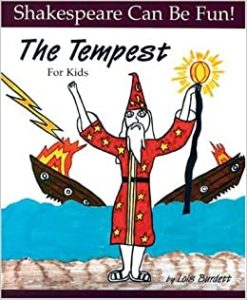
|
Prospero, Shakespeare’s famous magician, rules the enchanted island on which the action takes place in The Tempest. If your kids are too young for the original play, see Lois Burdett’s The Tempest (Firefly Books, 1999) in the Shakespeare Can Be Fun series for ages 5-9. These books, illustrated with terrific children’s drawings, convey Shakespeare’s plots through a kid-friendly rhyming text. It’s not the Bard’s language, but readers will get the general idea. |
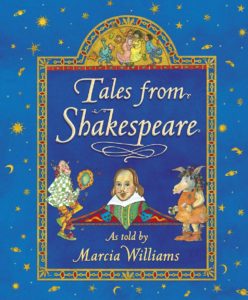 |
Marcia Williams’s Tales from Shakespeare (Candlewick, 2004) for ages 6-10 has whimsically illustrated comic-strip versions of seven plays, among them The Tempest. |
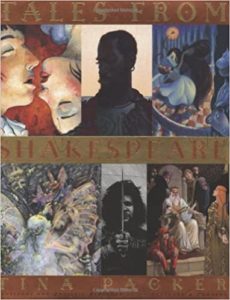
|
For ages 9-13, Tina Packer – Shakespearean expert and director of the Shakespeare & Company theatre group – provides prose versions of ten of the best-known plays, among them The Tempest, in Tales from Shakespeare (Scholastic, 2004). The book is beautifully designed – each play is introduced with a full-page painting – and the dialogue preserves some elements of Shakespearean language. |
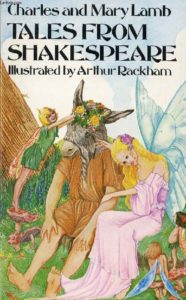 |
Charles and Mary Lamb’s classic Ten Tales from Shakespeare (Dover Publications, 2003) for ages 9-12 includes a prose re-telling of The Tempest. |
| For many more resources, see Shakespeare. |
TRICKS OF THE TRADE
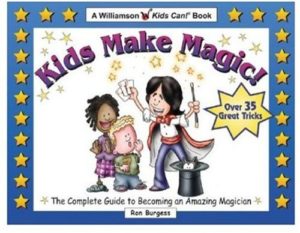
|
Ron Burgess’s Kids Make Magic! (Williamson Publishing, 2003), subtitled “The Complete Guide to Becoming an Amazing Magician,” includes instructions for performing 35 different tricks (plus instructions for making your own magician’s top hat). Recommended for ages 9-12. (Put on a show!) |
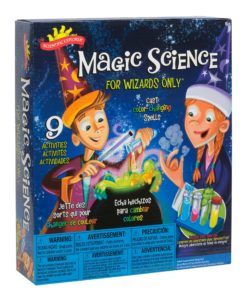 |
Scientific Explorer’s Magic Science for Wizard’s Only kit includes all the materials for 11 different “magical activities,” variously involving colored smoke, color-changing potions, and slime. |
 |
The Instructables website has illustrated instructions for making a cardboard magician-style top hat. |
| Check out these Wizard & Magic Crafts for Kids – including wands, potion jars, a spell book, and assorted pointy hats. | |
 |
Make Harry-Potter-style magic wands! You’ll need a chopstick, hot glue, and paint. |
 |
Seriously into magic? The Society of Young Magicians – the youth branch of the Society of American Magicians – publishes a monthly online magazine, offers email mentoring, and sponsors magic camps for aspiring magicians ages 7-17. |
THE SCIENCE OF MAGIC
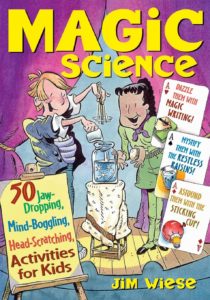
|
Jim Wiese’s Magic Science (John Wiley & Sons, 1998) is subtitled “50 Jaw-Dropping, Mind-Boggling, Head-Scratching Activities for Kids.” The activities are categorized under Matter, Reactions, Water, Air, Force and Energy, and Electricity and Magnetism, and each comes with clear illustrated instructions, a scientific explanation, and hints for performing before an audience. For example, kids can make a density tower and a magic seesaw, cause coins to disappear, and “magically” turn solutions different colors. |
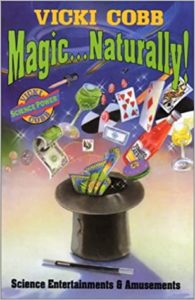
|
Vicki Cobb’s Magic…Naturally!(Trophy Press, 1993) is out of print, but can still be tracked down (and it’s worth it) through libraries and used-book suppliers. The book is divided into five sections – “Mechanical Wizardry,” “Fluid Fascinations,” “Energy Enchantments,” “Chemical Conjuring,” and “Perceptual Puzzlements.”In each section, Cobb gives instructions for five different “tricks,” along with a scientific explanation of why each works. Kids learn about inertia, buoyancy, surface tension, electrostatics, chemical reactions, and more through such magical feats as “Intelligent Eggs,” “The Writhing Snake,” “The Blue Flashback,” and “The Possessed Pendulum.” For ages 9-12. |
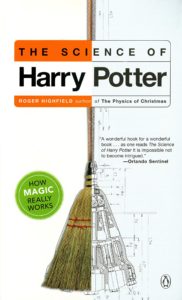
|
Roger Highfield’s The Science of Harry Potter: How Magic Really Works (Penguin, 2002) discusses the science, history, and mythology behind the Harry Potter books. (Does the Sorting Hat operate on brain waves? Was John Dee, conjurer to Queen Elizabeth I, the inspiration for Albus Dumbledore? Is the magical entrance to Platform 9 ¾ a wormhole?) Fascinating and fun reading for older teenagers and adults. |
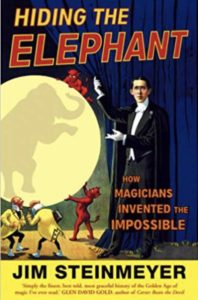
|
Jim Steinmeyer’s Hiding the Elephant: How Magicians Invented the Impossible and Learned to Disappear (Da Capo Press, 2004) is a fascinating history of stage magic from the mid-19th century to the 1920s, with a spectacular cast of characters. The title refers to a famous performance in 1918 when Harry Houdini made Jennie, an elephant, vanish from a circus wagon on the stage of the New York Hippodrome. For teenagers and adults. |
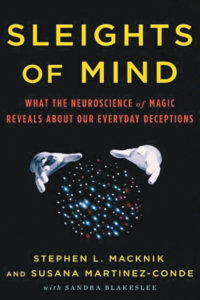
|
Sleights of Mind by Stephen L. Macknik and Susana Martinez-Conde (Henry Holt and Company, 2010) is subtitled “What the Neuroscience of Magic Reveals About Our Everyday Deceptions.” The authors explain how magicians exploit the normal workings of our brains to fool us, and how our brain function can similarly play us false in daily life – via visual, cognitive, multisensory, and memory illusions, false expectations and assumptions, illusory correlations and superstitions, and more. Forewarned is forearmed, sort of. For older teenagers and adults. |
| From Scientific American, see What Can Magicians Teach Us About the Brain? |
